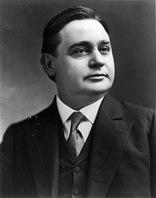United States House election, 1896
|
|
|||||||||||||||||||||||||||||||||||||||||||||||
|---|---|---|---|---|---|---|---|---|---|---|---|---|---|---|---|---|---|---|---|---|---|---|---|---|---|---|---|---|---|---|---|---|---|---|---|---|---|---|---|---|---|---|---|---|---|---|---|
|
|||||||||||||||||||||||||||||||||||||||||||||||
|
All 357 seats in the U.S. House of Representatives 179 seats needed for a majority |
|||||||||||||||||||||||||||||||||||||||||||||||
|
|||||||||||||||||||||||||||||||||||||||||||||||
|
|||||||||||||||||||||||||||||||||||||||||||||||
Elections to the United States House of Representatives were held in 1896 for members of the 55th Congress, coinciding with the election of President William McKinley.
In spite of McKinley's victory over William Jennings Bryan, both the Democratic and Populist parties gained seats from McKinley's Republican Party. This is most likely a reaction to the extraordinary Republican gains in 1894, in which many normally Democratic districts switched parties due to the severity of and fallout from the Panic of 1893. Many Mid-Atlantic and Midwestern regions that were dominated by Catholic and working-class voters, switched to Republican in 1894, but returned to the Democratic Party during this election cycle. The Populist Party also made huge gains as Republicans were ousted in Western states. Despite this, the Republicans did maintain a strong majority in the House. Also, several Western Republicans split with the party in 1896, forming the tiny Silver Republican Party faction, which advocated a silver standard.
This election marked the zenith of the Populist Party, which would go on to lose most of its seats in the 1898 elections and thereafter slowly fade from prominence.
...
Wikipedia


